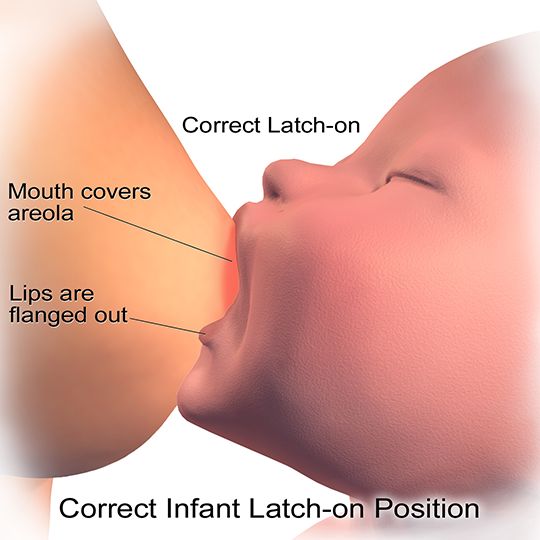Breastfeeding: How To Ensure that Your Baby is Latching Properly

Ndidi Adekunle
Maintaining a good latch to breastfeed you baby will ensure your breasts stay healthy. This will help the mother avoid painful events like plugged milk ducts, mastitis, sore nipples, engorgement, and the likes. So, can this be over emphasised? Here then, is how to ensure proper latching on to the nipple:
1. Place your baby at the same level as your breast. A nursing pillow and footstool may be helpful.
2. Once you are both comfortable, place your hand in a C-position, thumb above the areola, and fingers under the areola. You can then get baby to face you if she’s facing another way by touching her lower lip gently with the nipple, or even her cheek with your finger.

READ ALSO: Nursing Mum: 5 Tips on Boosting Your Milk Supply
3. Now, she’s turned to face you, wait for her to open her mouth wide, in readiness to suck, then bring her close to you (not you to her). Once you’ve brought her close to the breast, quickly but gently guide your nipple into her mouth. Ensure that she takes in the whole of your nipple, along with 1-2 inches of your areola, into her mouth. Now, this is the position for a proper latch.
4. Watch closely to ensure that she’s not just sucking but that she’s actually taking in milk and swallowing to get nourished. If she isn’t swallowing, press your breast gently in a downward motion to help direct the flow of milk into her mouth.
READ ALSO: Serena Williams Says She Doesn’t Know What To Do With a Baby | Find Out Why
5. If you find that your baby has not latched on properly, break the suckle and start afresh until you’re able achieve the proper latch.
Also note that apart from the ‘traditional’ latch described above, there’s also the ‘asymmetrical’ latch, favoured by women who have large boobies. They are also concerned about the position of the baby’s nose, and possible choking during breastfeeding. Still much like the traditional method, the only difference is that the baby’s nose is lifted farther off the breast than in the traditional latch.



Thanks….so educative
Noted.